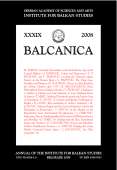Clothing as a Symbol of Charity and Soul Salvation in Late Medieval Kotor (Cattaro)
Clothing as a Symbol of Charity and Soul Salvation in Late Medieval Kotor (Cattaro)
Author(s): Valentina ŽivkovićSubject(s): History
Published by: Balkanološki institut - Srpska akademija nauka i umetnosti
Keywords: caritas; Kotor; Cattaro; the poor; wills; clothing; saints; stigmatization; imitatio Christi
Summary/Abstract: Religious practices in late medieval Kotor included charitable acts of donating clothes to the poor as a form of imitatio Christi. The model of charity for the faithful to follow was set in the vitae of widely-favoured saints such as Sts Martin of Tours, Francis of Assisi and Catherine of Sienna, whose portraits were painted on the walls of Kotor’s church of St Anne in the second half of the fifteenth century. Evidence for the practice and purpose of this particular form of charity is found in the surviving wills of the citizens of Kotor. Apart from giving clothes to the poor out of concern pro remedio animae, the motif of clothes features in the deceased’s testamentary instructions for burial in the habit of a mendicant order.
Journal: BALCANICA
- Issue Year: 2008
- Issue No: 39
- Page Range: 103-114
- Page Count: 12
- Language: English

